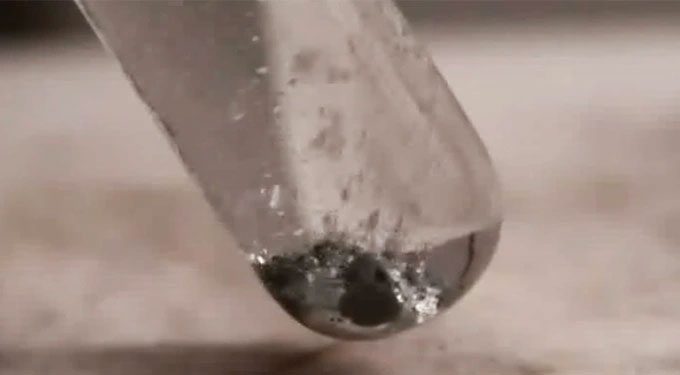New Research Seen as a Promising Step in Clean Energy.
Hydrogen fuel is poised to become a clean and abundant energy source in the future. However, scientists have yet to find a practical and cost-effective way to produce it without relying on fossil fuels.
To address this issue, researchers from the University of California, Santa Cruz (UCSC) have introduced a new study that could serve as a promising advancement in the clean energy sector.
According to the description, this method is relatively straightforward as it involves aluminum nanoparticles capable of extracting oxygen from water molecules, leaving behind hydrogen gas. The key to this method lies in the use of gallium to create a continuous electrolysis reaction with water.
The researchers noted that the reaction between aluminum-gallium and water has been known for decades. However, they have applied several techniques to optimize and enhance it.
Specifically, with the help of electron microscopy and X-ray diffraction techniques, the researchers were able to identify the best aluminum and gallium mixture to produce hydrogen with an impressive efficiency of up to 3:1.

Hydrogen bubbles produced from the reaction between water and the aluminum-gallium mixture. (Photo: Science Alert).
Additionally, the gallium-rich alloy also plays a dual role in removing the aluminum oxide coating (which typically hinders the reaction with water) and generating aluminum nanoparticles that allow the reaction to occur more rapidly.
“I’ve never seen anything like this before,” said Scott Oliver, a materials scientist at UCSC. “It requires almost no energy input, yet the experiment still produces a significant amount of hydrogen.”
It is reported that this process has successfully generated a large quantity of hydrogen, all occurring at room temperature. The fuel source for the reaction is relatively easy to obtain and can be stored for at least three months at normal temperatures.
Notably, gallium can be recovered and reused multiple times without losing its effectiveness. Meanwhile, aluminum is a fairly common metal that can be sourced from recycled materials.
Moreover, the method is said to work well with any water source, including wastewater and seawater.


















































